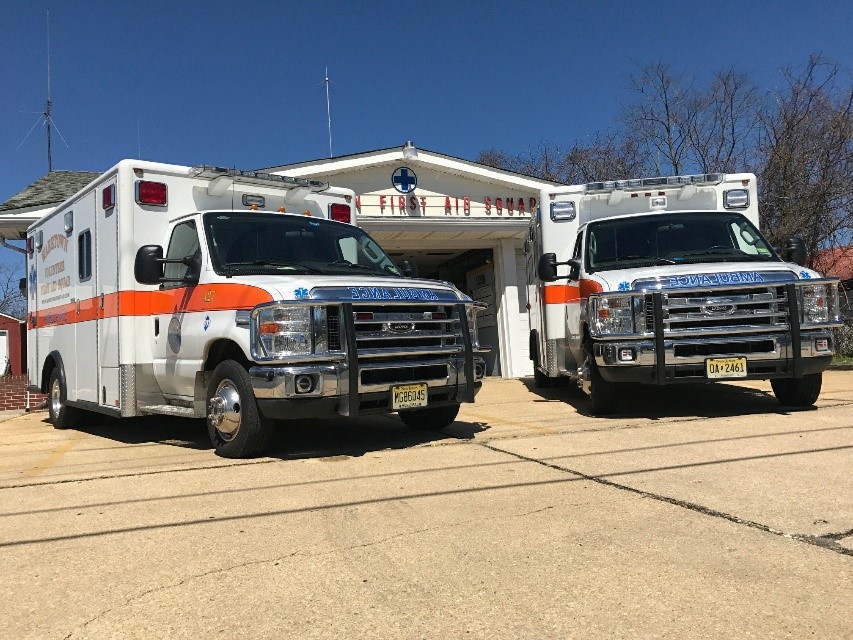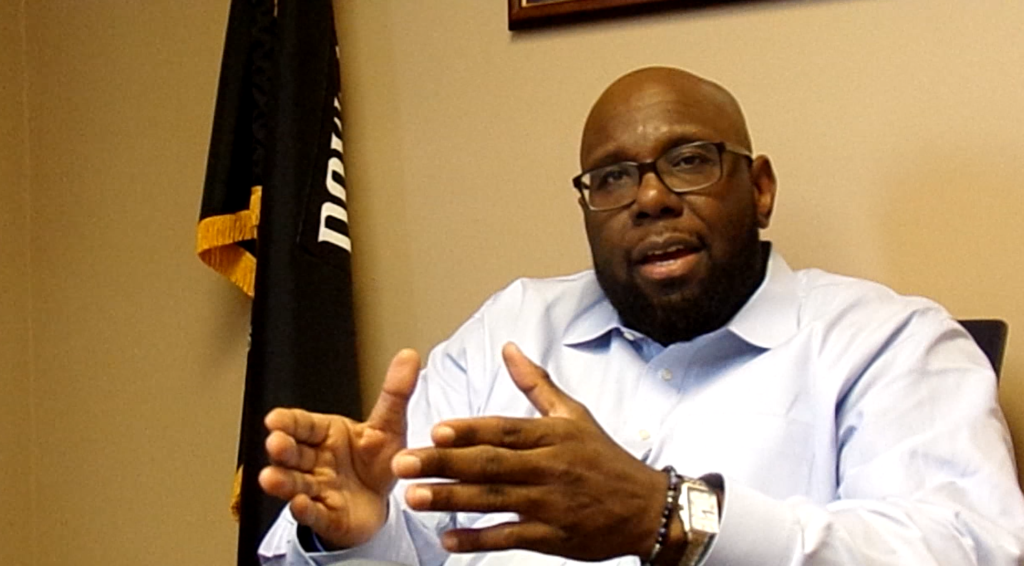
It was more than a year ago that President Biden declared the national emergency sparked by the COVID mass death event over, but here in New Jersey, and throughout the nation, our local Emergency Management Services find themselves in a deepening crisis as professionals leave this vital profession.
As we celebrate National EMS week, we should take note that this kind of life and death issue, the complete inadequacy of EMS local and nationally, isn’t on anybody’s 2024 campaign radar.
We are still twisted up on who won the 2020 election.
If Upton Sinclair were to write the modern equivalent to “The Jungle,” he might make the setting the metaphorical meat grinder of today’s emergency medical services industry. These selfless individuals, who embody the essence of Luke 10:25-37-in the parable of the Good Samaritan, are increasingly punched, spit on, stabbed and on occasion murdered for their trouble.
According to a National Institute of Health research paper published in 2018, national survey data indicates “that among Emergency Medical Technicians (EMTs), including firefighters and Paramedics, rates of suicide are significantly higher than among the general public. EMTs face high levels of acute and chronic stress as well as high rates of depression and substance abuse, which increase their risk of suicide.”
The American Ambulance Association reported in 2022, the turnover rate for EMTs, was 36 percent with paramedics just slightly better at 27 percent. Overall, over a third of the new recruits won’t make it to their first anniversary.
Here in the Garden State, as in the rest of America, we have a patchwork of voluntary community providers, for profits as well as hospital and local government run EMS. We also have so-called ‘ambulance deserts’ in areas where the volunteer model from a simpler time has flatlined or is near collapse.
“The biggest challenge stems from the fact that EMS is not labeled as an essential service in New Jersey and in at least 34 other states,” Montclair EMS Chief James Mazza, told InsiderNJ. “And what that translates to is we are not getting any sort of funding to provide that service. Obviously, each municipality is unique. Essex County has 22 municipalities and there are eight different service models. Some are funded by taxpayers, some are not.”
While Montclair is considered a wealthy community, its MAU transports at least one unsheltered person a day to the hospital. Even in Montclair, there’s a considerable portion of the population that rely on the local EMS as their healthcare provider.
And the lack of affordable housing for this population means EMS workers, and their patients are caught in a frustrating cycle of hospitalization followed by discharge back to the very same mean streets where unsheltered first showed up on EMS’s radar.
“In the last year we transported 1,000 individuals who had Medicaid as their primary and sole insurance and we only get paid $58 a call—a rate set [by the state of New Jersey] in 1994. I was all of a second grader—it hasn’t changed in 30 years,” Mazza says. “The real cost for an agency like ours is $350 a call—so for very Medicaid call we lose $300 for every Medicaid we respond to, leaving us to try and raise $350,000.”
Mazza cites a national survey that New Jersey’s Medicaid reimbursement rate for EMS is the lowest in the nation.
Industry wide, the lack of standing as essential and proper funding has a major impact on the workforce which is too often prone to high turnover, low wages and major attrition.
“This workforce crisis really started pre-COVID—I just think COVID exacerbated it,” Mazza says. “A lot of people left this industry during COVID and they are not coming back and what we are seeing now entering the industry are 18 to 25 year olds who are just graduating high school or just graduating college and they are on a pre-med, physicians assistant, nursing school or fire service track.”
In New York City, where EMS is part of the FDNY, EMTs and paramedics after three years on the job can take what’s considered a “promotions” test and switch to the firefighter title which pays tens of thousands of dollars more and comes with unlimited sick time.
Mazza says that because EMS is seen as a stepping stone, or as a prerequisite, new hires “are not going to be with us more than five years. So, there’s no succession plan. There’s nobody to be the next supervisor or the next EMS chief.”
Fortunately for Montclair and the surrounding communities that rely on it, MAU is an outlier in terms of its squads stability that its PIO Kristen Ryan, EMT, attributes to “the family feel and mutual respect” that defines the unit.
Montclair, with a population approaching 40,000, is very lucky. It has one of the most robust EMS organizations in the state with a staff of 45 paid EMS professionals and a leadership core with advanced degrees. (Full disclosure-my nephew Ben Hymson, is an EMT and MAU’s administrative coordinator.)
It operates as a 501c3 and its $2 million operations budget is covered by the revenue collected by billing insurance like Medicaid, Medicare and private carriers, some municipal support and donations.
MAU has seen its call volume jump from 3,769 in 2022 to 4,736 last year. At 16 calls a day, MAU is on the way to a 5,500 call volume this year and an increasing percentage of that volume is mutual aid.
“It’s possible that we pass four to five ambulances just sitting parked and not moving to the emergency we are responding to which means prolonged response times,” Mazza observes.
MAU is not immune to the troubling national trend of violence on the job.
“Last year we had six assaults and the prior year maybe one,” Mazza says. MAU did get grant funding to purchase ballistic vests and to provide de-escalation and self-defense for the occasions when a patient turns violent.
We shouldn’t be surprised at the degraded status of EMS under our current for-profit healthcare model that’s the most expensive in the world with the worst outcomes. We are four percent of the world’s population but accounted for 12 percent of the planet’s COVID deaths.
Poverty is the fourth leading cause of death in the US, ahead of homicides, leading to 800 avoidable deaths a day. And since tens of millions often rely on EMS for their primary care, it’s fair to suggest we could improve survivability if we gave EMS the attention we do to the protection of property losses from fire.
But we don’t.
(Visited 632 times, 24 visits today)
EMS Week is an annual event that celebrates and honors the hard work and dedication of emergency medical service providers across the country. This year, Insider NJ has highlighted a positive aspect of EMS Week amidst the challenges faced by these essential workers.
One of the key aspects of EMS Week is the opportunity to recognize and appreciate the sacrifices made by EMS providers in order to keep their communities safe. These individuals work tirelessly, often putting their own lives at risk, to ensure that those in need receive timely and effective medical care.
Despite the challenges faced by EMS providers, such as long hours, high stress levels, and limited resources, there is a sense of camaraderie and teamwork that shines through during EMS Week. This camaraderie is evident in the way that EMS providers support and uplift each other, both on and off the job.
In addition to recognizing the hard work of EMS providers, EMS Week also serves as a reminder to the public of the importance of supporting and advocating for these essential workers. By raising awareness about the challenges faced by EMS providers and advocating for better resources and support for them, we can help ensure that they are able to continue providing high-quality care to those in need.
Overall, Insider NJ’s highlighting of a positive aspect of EMS Week serves as a reminder of the resilience and dedication of EMS providers, even in the face of adversity. It is a time to celebrate their hard work and sacrifices, and to show our appreciation for all that they do to keep us safe.


